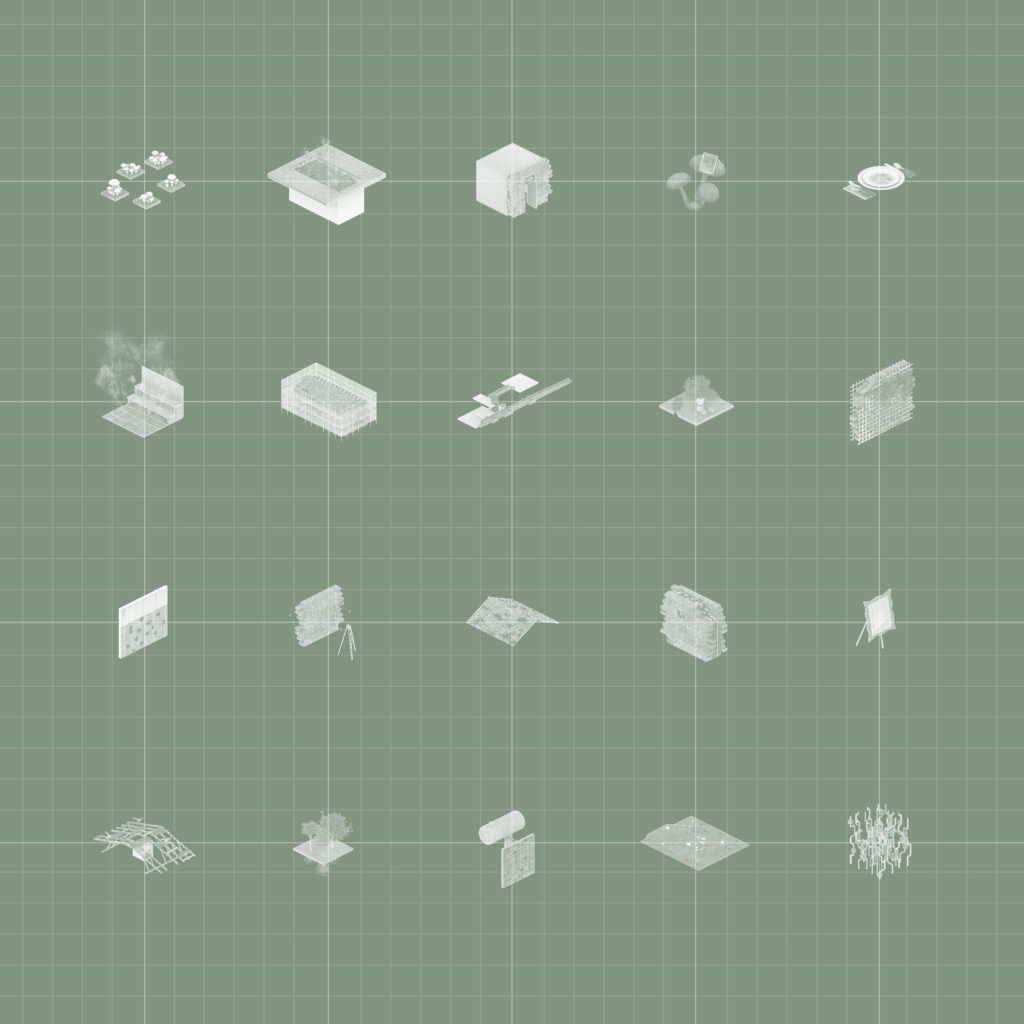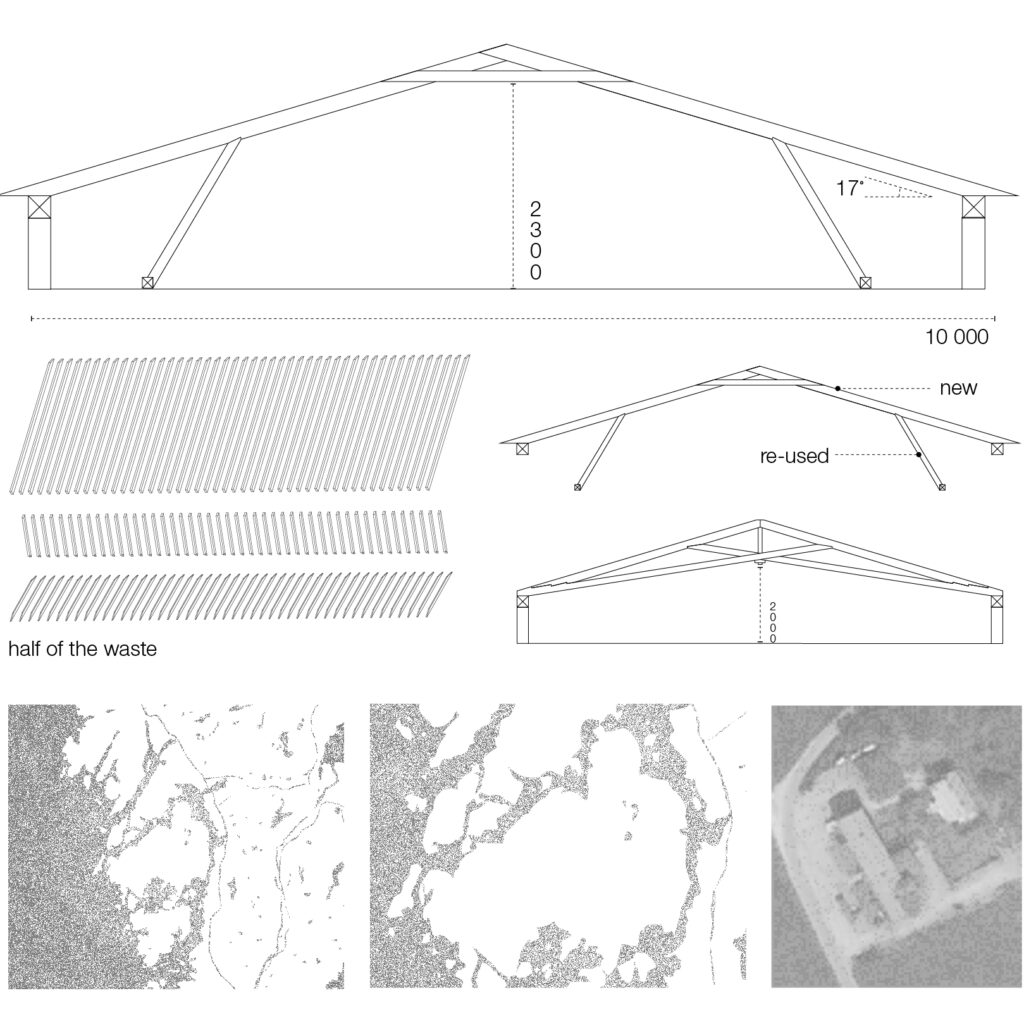project by: Erkka Juusela, Kajsa Rosenlund Lindvall, Yongting Lu

keywords: critical design, ecological design, non-human species, decomposition
The consequences of climate change are jeopardising the future of all species. Alarming scientific reports have called for responsibility and action to be taken to mitigate climate change by all individuals and industries. The building industry produces an estimated 40% of the total greenhouse gas emissions and accumulates one-third of the waste produced within the EU. With the purpose of investigating the responsibility and action, we as future architects have in order to mitigate the impact of the built environment the following question guides the exploration made within the context of the project.
How is architectural agency towards ecocentrism affected by building and material entropy?
Using the scenario making methods developed by Dunne & Raby a framework was created to anticipate futures that create opportunities to explore the virtue of ecocentrism through design. These anticipated futures are developed into architectural scenarios varying in time, scale and probability.
Each scenario answers to individual ‘what if’ questions targeting local materials and users. Through assorting the scenarios in accordance to background themes and sub-themes, the individual sub-conclusions are studied together constituting collective conclusions answering to the project research question.
The findings from the design exploration answer the research question: architectural agency towards ecocentrism is affected by building and material agency in the methods of practice. The methods involve evaluations guiding the boundaries of design, distancing from conventional methods towards the reinvention of vernacular traditions and technical innovation supporting ecocentrism. The architectural process rather than the created form becomes even more significant.
Moldywood
In this future the shape of the roof structure has grown worse through deterioration to the protective layers exposing the wood. This has caused mold growth, deteriorating the structural properties of the wood, also making for a hazardous indoor climate. These conditions adventure Återbrukets continual use of the Mejeri and the preservation of the heritage that the Mejeri symbolises. Thus the roof structure needs to be replaced, whilst considering the waste produced, sourcing and preserving its spatial qualities.

What Moldywood hints at is the complexity involving resource use. The scenario touches upon the generality; sourcing of wood, type of wood, truss design and waste management whilst lacking detailed depth. Possibly the scenario tells of the impracticalities in finding sustainable solutions without the support of proper expertise.
last edited January 2022 – By Elke Miedema